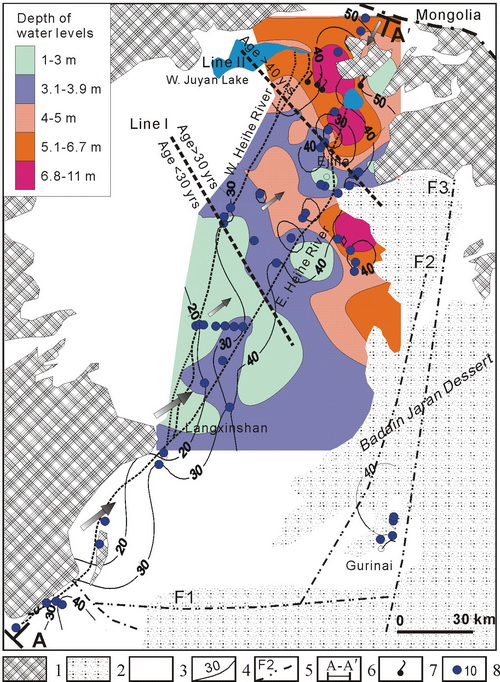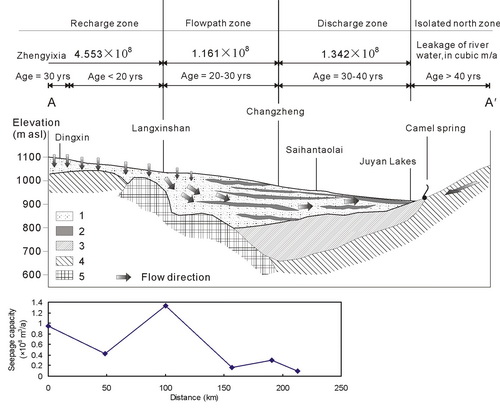Vice Professor QIN Dajun and his team study river infiltration and groundwater recharge in the aquifer system employing environmental traces and major ions in the basin of the Lower Heihe River, Northwest China.
Three groups of waters have been recognized including young groundwater, regional background water and groundwater in Gurinai, a grassland located about 100km from the river.
The chlorofluorocarbon (CFC) apparent age of the groundwater increases with increasing distance downstream, indicating that the dominant part of the groundwater is from infiltration of river water in the upper reaches. Modifications of groundwater recharge are reflected in variations of stable isotope compositions, as well as CFC and 3H concentrations in the groundwater that was recharged from the river over the last decades.
Despite recharging from river water, groundwater abstraction has induced a water balance deficit. The riparian ecosystem in the Ejina Oasis is constrained by both decreased river flow and increased groundwater abstraction. The vegetation degradation in the Ejina Oasis is controlled not only by natural aridification but also worsened by heavy groundwater abstraction and decreased river flow.

Fig. 1. The relationship of CFC apparent ages for groundwater and the depth of goundwater in the Lower Heihe River area. (Image by QIN)

Fig. 2. Relationship of the monitored leakage of river water and CFC apparent ages in the Ejina Quaternary Aquifer. (Image by QIN)
Qin et al. Determination of groundwater recharge regime and flowpath in the Lower Heihe River basin in an arid area of Northwest China by using environmental tracers: Implications for vegetation degradation in the Ejina Oasis. Applied Geochemistry. 2012, 27: 1133–1145 (Download Here)